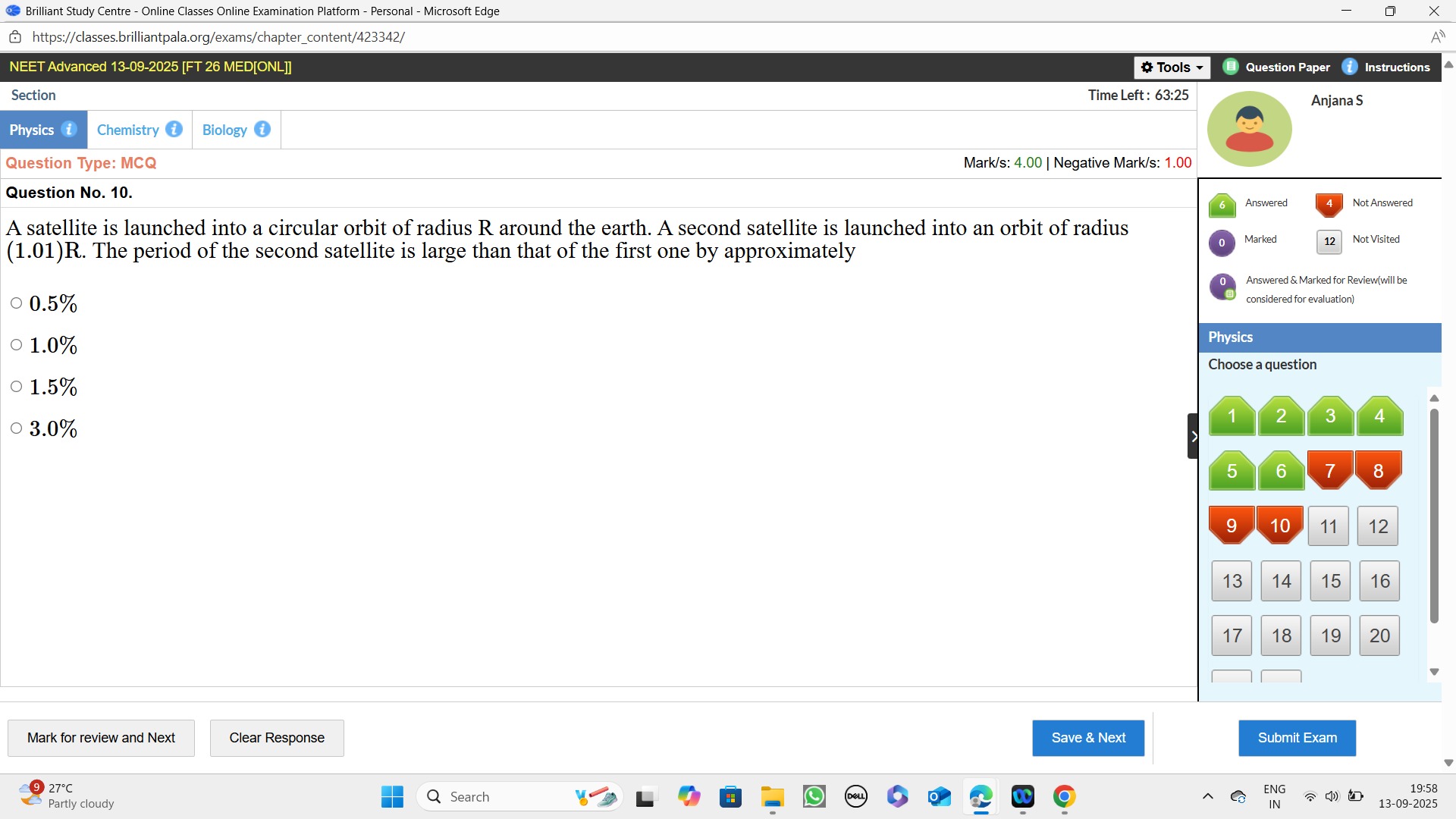Question
Question: A satellite is launched into a circular orbit of radius R around the earth. A second satellite is la...
A satellite is launched into a circular orbit of radius R around the earth. A second satellite is launched into an orbit of radius (1.01)R. The period of the second satellite is large than that of the first one by approximately

A
0.5%
B
1.0%
C
1.5%
D
3.0%
Answer
1.5%
Explanation
Solution
Kepler's Third Law states that T2∝R3, which means T∝R3/2. For the two satellites, we have: T1T2=(R1R2)3/2 Given R1=R and R2=1.01R. T1T2=(R1.01R)3/2=(1.01)3/2 Using the binomial approximation (1+x)n≈1+nx for small x: (1.01)3/2≈1+23×0.01=1+1.5×0.01=1+0.015=1.015 The percentage increase is: (T1T2−1)×100%≈(1.015−1)×100%=0.015×100%=1.5%
